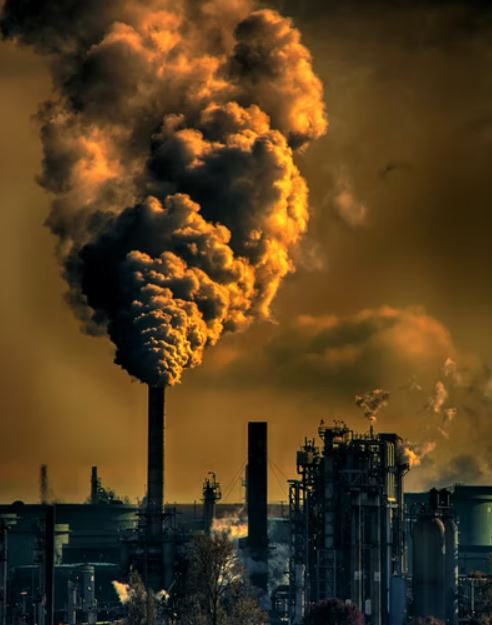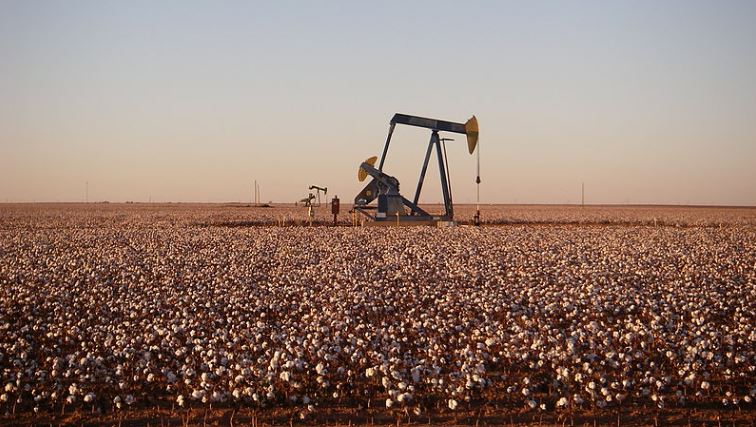Texas’s oil and petroleum industry is a huge industry that significantly contributes to the Texas economy. Oil and natural gas deposits in the Gulf Coast region of Texas have been searched for several centuries, with commercial drilling starting in 1901. While the oil industry is older than Texas, the state gets a lot of credit for its role in the development of the modern industry.
Today, Texas is at the forefront of technology when it comes to extracting oil. With the recent fracking boom, Texas has gained an edge and become a global leader in extracting natural gas. Also, it has brought more revenue to the state and increased employment.
Oil in Texas
While Texas is the number one oil-producing state in the US, it is also the number one petroleum refining state in the US. In addition, Texas produces more natural gas than any other state in America and more than any other country in the world. [1]
History of Oil Production in Texas
Spanish explorer Luis de Moscoso of the DeSoto expedition reported seeing oil floating on the water in Galveston Bay, near Port Arthur, Texas, in 1543. Then in 1866, Lyne Taliaferro Barret drilled the first Texas oil well. However, Barret’s Nacogdoches County oilfield didn’t produce commercial quantities of oil until others returned to his well nearly two decades later. [2] [3]
The first active oil well in Texas was located at Spindletop. The well began gushing on January 10, 1901, and over the next few months, hundreds of prospectors flooded the area, hoping to strike it rich by finding black gold.
In 1924, the original drill at Navarro produced almost 33 million barrels of oil in a single year; other rigs in the area produced similar numbers before beginning to taper off. [4]
Petroleum in Texas
Texas is the leading oil-producing state in the United States, accounting for 41.4% of US crude oil production in 2019. In addition to being one of the largest oil producers in the world, Texas also ranks first globally in petroleum refining capacity and natural gas production. [5]
At the end of the 19th century, with the arrival of railroad lines in most areas of the country, agriculture became a booming industry. Not long after, however, it was replaced by the petroleum industry as the dominant industry in many parts of America. Over time, the railroad’s main source of revenue out of the state of Texas shifted from agriculture to oil and gas production.
The state’s largest field is called Permian Basin, after its location along an ancient sea bed between New Mexico and West Texas just west of the Midland-Odessa area, which spans parts of Lea County, Ector County and Winkler County (just southwest from Lubbock).
The Permian Basin has been around since the early Cretaceous period over 100 million years ago, but it wasn’t until 1921 when it was discovered by accident during drilling for water near Big Lake northeast from downtown Odessa that triggered what is now known as “black gold fever” among many others who wanted to get rich quick.
Permian Basin | History
The Permian Basin is one of the world’s most prolific oil and gas-producing regions. It has been producing oil since the 1920s, but it wasn’t until 2010 that production really took off. Today, it produces more than 11 million barrels of oil per day. [6]
The Permian Basin covers a large swath of land in western Texas and southeastern New Mexico (almost 52 counties); it’s also known as “the Texas Oil Patch” or simply “the Basin.” It’s estimated that there are over 105.7 billion barrels of recoverable oil resources in this region alone! [7]
The Biggest Oil Towns in Texas
- Houston
The city of Houston is home to the headquarters of several oil and gas companies, as well as a number of industrial gas complexes. Although layoffs in the oil industry have occurred in Houston, the city remains a major energy hub.
BP, ConocoPhillips, and Shell are the major employers in Houston’s Energy Corridor. Phillips 66 is the second-largest public company in Texas and brought in $111.5 billion in revenue for 2018.
- Austin
Since the oil boom, 300 companies have moved to Austin, including Jones Energy and Brigham Exploration. These companies employ residents in fields such as oil investment, surveying, drilling technology, and production.
In addition, Petroleum and geosystems engineering students receive a solid education that enables them to be equipped with modern and up-to-date technologies upon entering the field.
- Dallas
Oil production helped diversify the city’s economy and led to the decline of the rail and cotton industries. Also, Energy Transfer LP’s headquarters is located in Dallas, Texas. It earned $54 billion in revenues in 2018 and 2019, but its 2020 revenues were down to $38.9 billion.
- San Antonio
San Antonio has the seventh-largest population in the US and is home to the South Texas Oilfield Expo, an annual event that draws more than 80 gas and oil companies. Valero Energy, which had revenues of $108 billion in 2019, but only $64.9 billion in 2020, is one of the companies that was hurt most by the impact of rising oil prices. [8]
The city’s largest employer is the Ultramar Diamond Shamrock Corporation, owned by Valero.
Monthly Oil & Gas Production
- Texas produces more oil barrels per day than any other state. In 2021-2022, it produced 1.4 billion barrels of crude oil per day (bpd).
- Texas is the biggest producer of natural gas in the US. It has a total of 163 natural gas production plants, each producing on average 19.7 billion cubic feet of natural gas per day. [9]
- Texas alone produces more oil than any other country in the world besides Saudia, Russia, and Iraq.
State Government Tax on Oil Production
The tax on oil production in Texas is measured as a percentage of the value of the product. For example, if you are an oil producer and have extracted 1,000 barrels of oil from your well, you must pay a 4.6% tax on those 1,000 barrels. [10]
Other factors that affect this tax include the time period during which it was extracted (whether it was done over one month or six months), whether or not it was extracted from an existing reserve or a newly-discovered reserve and so on.
Oil Benefits to Texas Higher Education
As the state’s largest industry, oil and petroleum production has been a major source of revenue for Texas higher education. The University of Texas at Austin has benefited from this revenue stream, but it is not the only school to reap benefits.
Texas A&M University System is one of the top beneficiaries of oil and petroleum production in terms of financial support and employment opportunities. In fact, there are over 6,000 jobs available in Texas’ energy sector alone! Most people who work in these industries do not need to relocate; they often just need advanced degrees or certifications that can be obtained right here in their home state so they can continue working where they have made their lives and raised families.
The Oil and Petroleum Industries Have Made a Huge Impact on Texas’s Economy
Today, oil and petroleum is one of the top 10 industries in Texas, accounting for approximately 9% of Texas’s gross domestic product (GDP). [11] Additionally, these industries provided $126 billion in economic output or around 41% of all manufacturing value-added across all sectors.
In terms of employment, there were over 181,900 workers directly employed by oil and gas extraction activities. The amount paid out in wages was $10 billion, with another $14 billion being paid out as benefits, such as health insurance coverage or retirement savings plans like 401(k)s and 457 plans for workers who receive them through their employers. [12]
Additionally, the average salary of a person working in an oil and gas industry in Texas is anywhere near $73,764 per year. [13]
References
- https://www.statista.com/statistics/714376/crude-oil-production-by-us-state
- https://stateimpact.npr.org/texas/tag/oil-production-in-texas
- https://aoghs.org/petroleum-pioneers/first-texas-oil-well
- https://www.talonlpe.com/blog/a-brief-history-of-the-oil-and-gas-industry-in-texas
- https://worldpopulationreview.com/state-rankings/oil-production-by-state
- https://www.texastribune.org/2022/03/25/texas-permian-basin-oil-russia-invasion
- https://www.beg.utexas.edu/publications/oil-and-gas-resources-remaining-permian-basin-targets-additional-hydrocarbon-recovery
- https://www.investopedia.com/articles/investing/112415/biggest-oil-towns-texas.asp
- https://stateimpact.npr.org/texas/tag/natural-gas-production-in-texas
- https://comptroller.texas.gov/taxes/crude-oil/
- https://contiorg.com/news/oil-and-the-texas-economy
- https://www.houstonchronicle.com/business/energy/article/Oil-and-gas-jobs-jump-in-Texas-as-producers-ramp-17029729.php
- https://www.glassdoor.com/Salaries/houston-oil-and-gas-salary-SRCH_IL.0,7_IM394_KO8,19.htm





